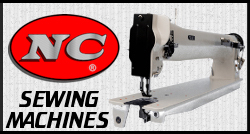-
Suede vs Flesh side of leatherHi @Bryan Owens and @Andy Laird. As promised, we posed this question to Aaron Laithwaite of Hydes Leather.
Here's the answer he provided us: Is the Back of Leather the Same as Suede?
In short, he doesn't recommend it and explains why. -
Convertible Top Horses ???Wow! I didn't realize so many shops had their own methods for holding up convertible tops. Necessity really is the mother of invention!
Our 2x4 is wrapped in headliner fabric, which is so sort of a hybrid of the methods used by @Fred Mattson and @Eric Gordon.
@jim zabatta, that's some clever marketing on behalf of Treon! -
Convertible Top Horses ???Hahaha @Fred Mattson. Yup, my father used the 2x4 when I wasn't around (see how easily replaceable I was?) :lol:
We still use the 2x4 today. But now we might just have to build a horse... -
Leather semi braSame suggestions as above. If this is something the trucker is going to keep on through rain, snow, etc -- it's gonna get ruined pretty quickly. There are materials treated for the elements. Stick with those.
Funny subject line, though! I too was expecting something sexier than a truck. -
Suede vs Flesh side of leatherThanks @Bryan Owens. We posed the question to Aaron this week. Hopefully, we'll have the answer for you next week. We're also interested in hearing his thoughts on the subject.
-
Suede vs Flesh side of leatherWe're really intrigued by this question. @Bryan Owens, If you don't mind, we're going to pose it to Aaron Laithwaite, founder and CEO of Hydes Leather, for the next question in our monthly series "Ask Aaron"
Here are two previous questions about leather that he answered for us:
It'll be interesting to see what he says. -
Air bag seatsQuick update: Shortly after this thread started, an interior design engineer for Tesla Motors reached out to us wanting to explain airbag seams to The Hog Ring community, as there are clearly a lot of questions and misconceptions floating around the industry. Of course, we jumped on the opportunity.
Here it is: Read This Article Before Sewing Airbag Seams
This is probably the most important article we've ever published, as it might save lives and our shops. -
Auto Upholstery Summer CampAnyone interested in learning about McPherson College, check out this interview we did with Michael Dudley, a former shop owner-turned-assistant professor of automotive restoration, who told us all about the upholstery courses he teaches there: Learning Upholstery at McPherson College
-
Mercedes E60 AMG interior materialTried researching this for you. Everything I read says there were only 12 models of the 1994 Mercedes E60 AMG made with this leather interior -- which is only referred to as the "Limited" sports interior.
It sounds like you have a really rare model on your hands. Unfortunately, I can't find the name of the insert style/design. Try calling the Mercedes-Benz Museum? -
Bus seat foamI agree with Eric.
If you insist on new foam and are looking to save time, here's an option: Order your foam from Albright's Supply and tell them how you want it cut. They offer free foam cutting. Read about it here: https://bit.ly/2ZPw9OQ
Of course, you'll need to tell them what type/density foam and dimensions you'll need. -
Glue After SmellThe smell is bad and very unhealthy. You're right that it's most prominent in hotter climates, where there's a lot of off gassing.
I'm not aware of any glues that have good odor or no odor at all. My advice is to aerate the car before giving it back to the client, leaving all the windows open in a windy area.
Also, advise the owner to continue aerating the car for a few days afterwards. -
Skiver advice@Hal Bast You should reach out to @Mal Maher at NC Carpet Binding & Equipment. They just introduced a new skiver to their product line that's getting great reviews from upholstery shops across the industry -- including Bux Customs and JK Automotive Designs.
The SK2019 is an industrial strength machine that can skive into leather up to 2". It comes with a servo motor workstation, 2-year. limited warranty and free LTL truck freight. If I'm not mistaken, they're also offering limited-time special on pricing too. You can view it here: https://bit.ly/2CKc5n9
Mal's a great guy, he'll tell you everything you need to know about these machines. -
Storing leather hides@Dean McConnell, as promised we used your question in our first installment of "Ask Aaron," a new article series about leather. You can read his reply here: http://www.thehogring.com/2019/03/28/store-leather-hides-small-shop/
We'll be publishing a similar article every month, so feel free to send us more! -
LeBaron BonneyIndeed, this is really unfortunate.
We tried following up with LeBaron Bonney yesterday, but could not get through. Their website, social media accounts and email addresses have all been deactivated.
However, we did track down the court filing, which confirms it's a Chapter 7. This means the company has to sell all its assets to pay its debts, which the filing says ranges from $500K - $1 million.
In most cases, this shutters a business for good. No telling if LeBaron Bonney has plans to relaunch after the proceedings are complete.
You can read more about it here: https://bit.ly/2OjzeS7 -
1988 MERCEDES 560SEL WOOD RESTORATIONShops that do this sort of work are few and far between. Check out California shop Madera Concepts: https://www.maderaconcepts.com/
-
Air bag seatsSteve is correct. There's a lot of reverse engineering, testing and documenting that goes into their seat cover prototypes. Once they have a cover they're comfortable with, they produce it on a mass scale.
The process adds a level of protection that most auto upholstery shops don't have the money or resources to match.
Of course, this is going to have a longterm effect on our industry... -
Air bag seatsLike Steve, I have yet to hear of an individual suing an auto upholstery shop over airbags that didn't deploy properly due to seat repair.
However, there have been cases of customers suing repair shops for installing cheap, knockoff airbags that didn't deploy or charging people for airbags and not installing them at all.
Of course, there have also been multi-million dollar class-action lawsuits against automakers like Ford and Honda over faulty Takata airbags. Some law firms even actively search for people with airbag grievances to file suit. -
Air bag seats@Chris Vining
Automakers are the ones warning trim shops not to resew seat covers with airbags. See these articles we've written specifically about Nissan:
Warning: Do Not Resew this Cover
No Ideal Solution to 'Do Not Resew' Tags
Nissan Answers 'Do Not Resew' Inquiries
Leaked: Nissan 'Do Not Resew' Policy
In 2012, SEMA attempted to answer the same questions you have -- but even they couldn't get to the bottom of it.
That said, the large aftermarket seat cover makers do certify their seats as airbag safe -- this is because they've spent a ton of money in research and development to reverse-engineer how automakers do it and match their capabilities. They also have DEEP pockets that allow them the opportunity to do so.
Most of these seat cover makers post their certifications -- done by third party research firms -- on their websites.
There are special sewing machines on the market -- such as the Durkopp Adler 550-867 -- which is made specifically for seats with airbags. Unlike traditional sewing machines, the 550-867 monitors thread tension and stitch length to ensure they meet industry standards, and documents this in a database to shield operators from potential liability. The station’s goal, Durkopp Adler explains, is to execute a stitch that’s “strong enough to resist the stress under normal conditions and at the same time it must guarantee the unrestricted, accurate exit of the airbag.”
PFAFF has similar specialty sewing machines. They're outfitted with computers that help calibrate stitch strength/tension, record that you made the stitch in a database and even issue a barcode label for you to stitch to the cover to prove that you made the stitch using the proper method.
There are also expensive airbag seam testing machines, which we have not seen on the market, but are often used by engineering firms. These conduct comparison tests between the thread combinations of the original and the new seams.
We do not know of any US laws regulating airbag seams, but there very well may be -- if not on a federal level, then maybe on a state level. You'd have to consult with a legal expert about that.
Regardless of whether or not a law exists, you can still be sued if you repair an airbag seam that does not deploy properly.
In the end, it's up to you.
Hope that helps. -
Storing leather hidesThe one I need is always the 40levenvith one on the rack and I have to unload to get to it then put them all back. — Bryan Owens
:lol: :rofl: :lol: -
Perforating VinylI agree with @Steve Ingram. These days, you can have the vinyl professionally perforated for you.
Hydes Leather, for instance, will do custom perforation. You can have a roll of black vinyl perforated the way you like and just store it for later use. It'll save you time when you need it later. -
Thread issue on new thread...Thanks for sharing the solution with us @Clay Hurtubise. This is really good to know, because some of our spools are ancient... best to replace them with a fresh spool before starting really important projects.
-
Seat belt grommetHave you tried SeatbeltPlanet.com ? They sell a lot of plastic guides and covers for seatbelts. I don't see the grommet on their website, but they should have a better idea on where to find it:
https://www.seatbeltplanet.com/c-1389309-accessories-sleeves-plastics.html
Nadeem Muaddi

Start FollowingSend a Message








- Terms of Service
- Useful Hints and Tips
- Sign In
- Created with PlushForums
- © 2025 The Hog Ring